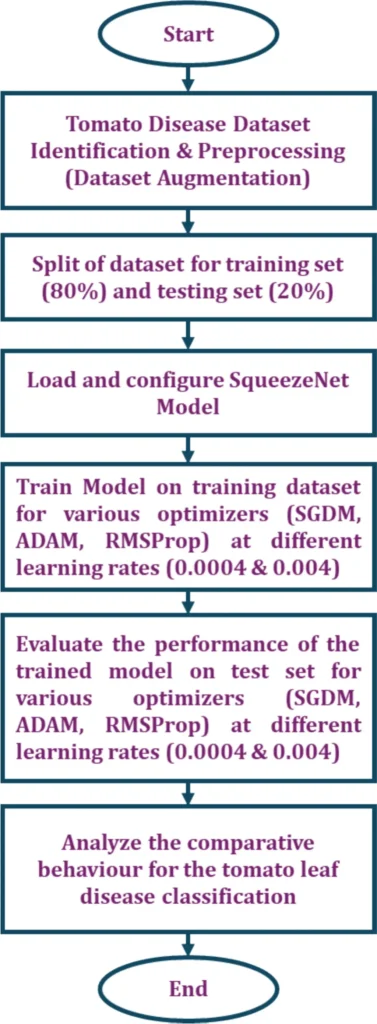In the heart of Florida, a team of researchers led by Siddhant Jagdev from the University of Florida’s Department of Mechanical and Aerospace Engineering has developed a groundbreaking deep learning framework that could revolutionize the way we detect and classify tomato leaf diseases. The study, published in the International Journal of Computational Intelligence Systems (Международный журнал систем интеллектуальных вычислений), introduces a lightweight, efficient model based on the SqueezeNet framework, offering a promising solution for real-time disease diagnosis in resource-constrained agricultural settings.
Tomato crops are a staple in global agriculture, but they are constantly under threat from various diseases that can cause severe yield loss. As the world’s population continues to grow, the need for quick and accurate disease detection has become more critical than ever. Traditional methods of disease diagnosis are often time-consuming and require specialized expertise, making them impractical for large-scale, real-time monitoring.
Enter SqueezeNet, a deep learning model known for its computational efficiency and low resource requirements. Jagdev and his team explored the potential of SqueezeNet for tomato leaf disease detection and classification, focusing on optimizing training parameters to achieve high accuracy without the computational cost typically associated with deep learning models.
“We wanted to create a model that could be deployed in real-world agricultural settings, where resources are often limited,” Jagdev explained. “SqueezeNet’s lightweight architecture made it an ideal candidate for this task.”
The team employed various combinations of optimizers and learning rates during both training and testing phases, resulting in six configurations per case. The model achieved impressive accuracy rates, with the ADAM optimizer at a learning rate of 0.0004 yielding a remarkable 99.91% accuracy for the TMC class during testing and a perfect recall rate for the TH class. The Stochastic Gradient Descent with Momentum (SGDM) optimizer also performed well, with a 99.65% recall rate for the TYLCV class at the same learning rate.
The proposed framework’s robustness is further evidenced by its high F1-scores, which measure the balance between precision and recall. The model achieved an F1-score of 99.42% with ADAM testing at 0.0004 and 99.38% with SGDM training at 0.0004 for the TYLCV class. Moreover, the model’s low misclassification rate, ranging from 0 to 0.21%, instills confidence in its diagnostic capabilities.
The implications of this research are significant for the agricultural sector, particularly for precision agriculture practices. The model’s minimal computational requirements and scalability make it an excellent choice for advanced disease monitoring systems, enabling quick and accurate diagnosis at the field level. This can lead to timely interventions, reducing yield loss and improving overall crop productivity.
“This research opens up new possibilities for real-time, on-site disease detection and classification,” Jagdev said. “It has the potential to transform the way we approach crop monitoring and management, ultimately contributing to food security and sustainable agriculture.”
As the world grapples with the challenges of climate change and population growth, innovative solutions like this SqueezeNet-based framework are more important than ever. By enabling early detection and classification of tomato leaf diseases, this technology can help farmers make informed decisions, optimize resource use, and enhance crop resilience.
The study’s publication in the International Journal of Computational Intelligence Systems underscores its relevance and potential impact on the field of computational intelligence and its applications in agriculture. As research in this area continues to evolve, we can expect to see more advanced, efficient, and accessible tools for disease monitoring and management, paving the way for a more sustainable and food-secure future.

